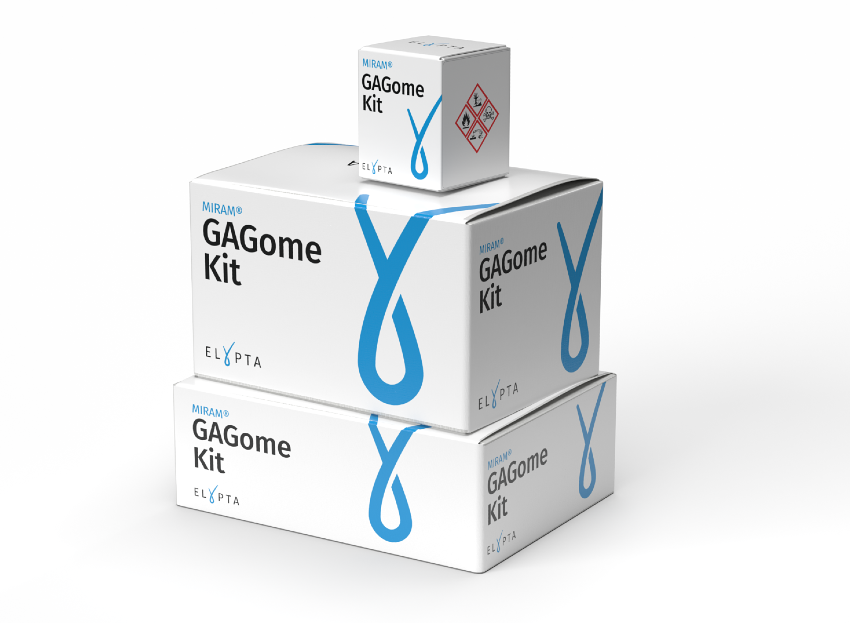In our aim to provide the first metabolism-based liquid biopsy for early detection of cancer, we developed the MIRAM® kit to enable precise measurements at scale
We are proud to offer the first standardized, precise, and efficient service for full spectrum glycosaminoglycan quantification using Elypta's MIRAM® kits.
If you are a researcher interested in using Elypta's MIRAM® kit in your research, we encourage you to apply for sponsorship to help cover service costs.
Elypta's MIRAM® kits leverages established state-of-the-art lab methods for glycosaminoglycan (GAG) extraction and detection to deliver high and reliable performance in a standardized and scalable way.

The method relies on an enzymatic digestion assay that depolymerizes GAGs into disaccharides. Disaccharides are subsequently labeled and separated by ultra-high performance liquid chromatography (UHPLC) and detected using electrospray ionization triple-quadrupole mass spectrometry (ESI-MS/MS) through multiple reaction monitoring.
MIRAM® Free Glycosaminoglycan Kits accurately measure the protein-free fraction, concentration and structural composition of chondroitin sulfate (CS), heparan sulfate (HS), and hyaluronic acid (HA). The MIRAM® Protein-Bound Glycosaminoglycan Kits extract the glycosaminoglycans with the addition of a protein-digestion step, recovering both protein-free and protein-bound GAGs. The measurements can be done in a wide array of research specimen such as blood, urine, tissues, cell culture, and other biofluids. The kits require only comparatively small sample volumes to produce precise results across the full glycosaminoglycan profile.
More information about the analytical performance characteristics of the MIRAM® Free Glycosaminoglycan Kit for GAG quantification can be found here: